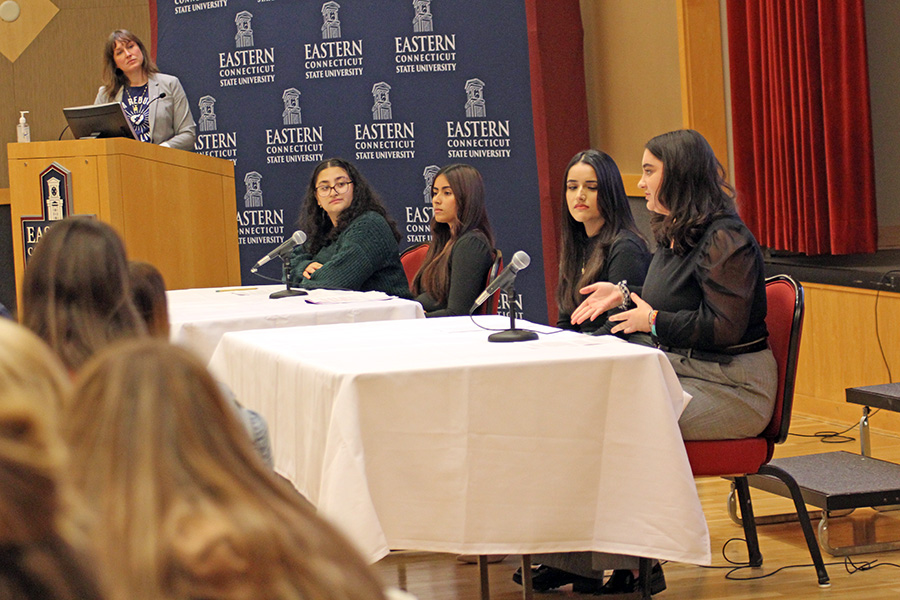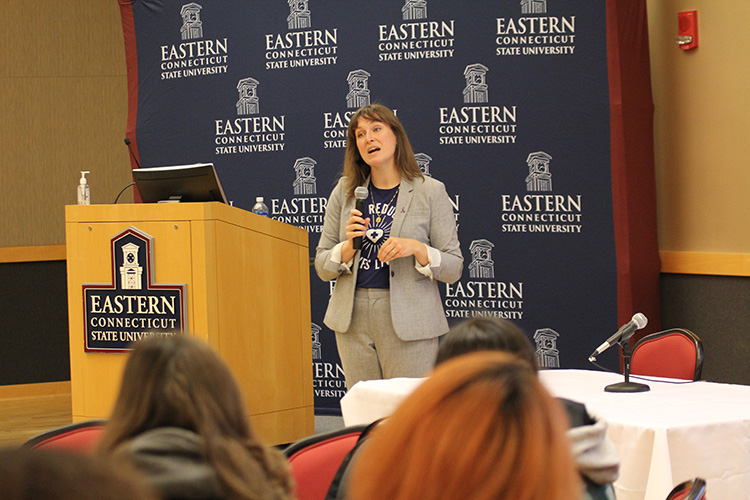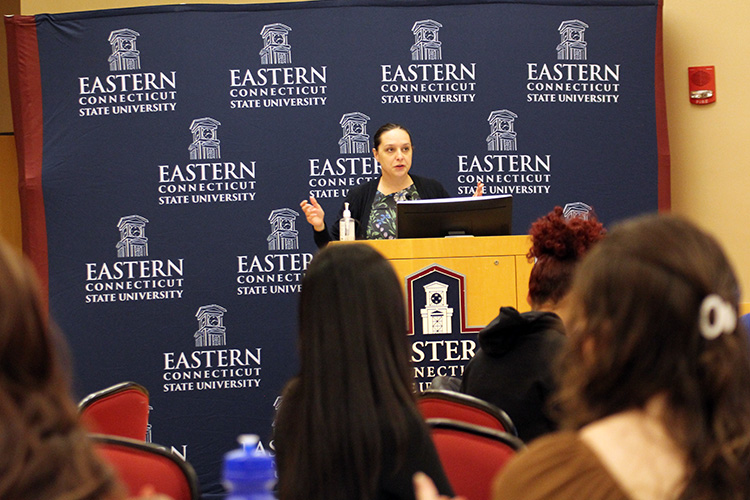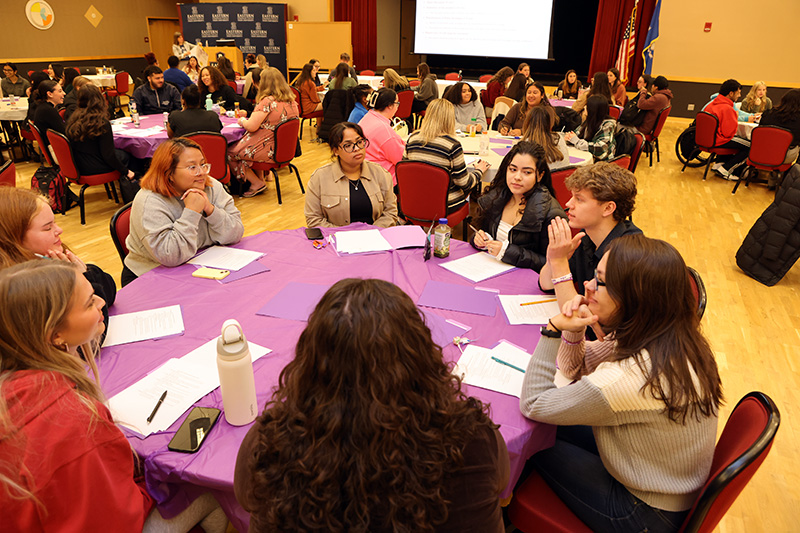- Apply
- Visit
- Request Info
- Give
Social Action Day tackles opioid crisis
Written by Michael Rouleau
Published on November 08, 2023

Addressing the nation’s opioid epidemic was the topic of this year’s Social Action Day on Oct. 31, during which students prioritized an awareness campaign about this decades-long problem and advocated for trauma-informed care to treat it.
Social Action Day is organized each year by junior social work majors and focuses on pressing social issues through the lens of policy advocacy. This year’s event served as a primer to a summit on the opioid epidemic that will be hosted at Eastern in the spring 2024 semester.
“The opioid epidemic is an issue with a lot of trauma and tragedy,” said social work Professor Megan Stanton, adding that it’s also an issue with a lot of hope and potential for collaboration between policymakers and practitioners.
This year’s event also involved political science students, who researched the topic from a policy perspective. Political science Professor Courtney Broscious gave an overview of the epidemic—highlighting three waves—starting in the late 90s with prescription painkillers.
The initial wave was driven by Connecticut-based Purdue Pharma and its flagship drug, OxyContin. This slow-release pain medication was billed as safer than its predecessor, MS Contin, and heavily marketed in West Virginia and Kentucky.
Broscious noted that these were, and are, areas with high rates of rural poverty and manual labor, with high prescription potential due to workplace injuries. Though the epidemic has spread throughout the country, Broscious sees rural Appalachia as the epicenter, further exacerbated by a scarcity of services and resources to address the problem.
As prescription pill abuse waned over the years with tightening regulation, in its place came waves two and three: heroin and now, fentanyl and the rise of synthetic opioids. Driven by an unregulated black market pedaling dangerously potent opioids that are often laced with other chemicals, this current wave presents new challenges and urgency to first responders and families affected by the crisis.
A panel of students presented three policy strategies to address the ongoing epidemic. Junior social work major Alexis Valentine described the approach of “harm reduction.” Characterized by syringe exchange programs and “safe-use” sites equipped with overdose medication and drug testing kits, “harm reduction recognizes that people will continue to use drugs,” she said, “therefore the aim is to decrease overdoses and drug-related deaths.”
Valentine noted limitations to this approach, including an opposition claiming that it enables/promotes drug use. She said more public awareness is needed to normalize harm reduction and decrease the stigma associated with drug use.
Junior political science major Maheen Khan explained faith-based interventions to address the epidemic’s effects on people of color. Recognizing that there are different socioeconomic conditions at play and much distrust of law enforcement among Black and Hispanic communities in particular, this approach “seeks to erase systemic disparities,” said Khan. “The impact of the opioid epidemic on BIPOC communities is often overlooked and faces different challenges.”
This approach calls for involving religious organizations in the response, as they often have deep roots and strong networks in communities of color. “This approach recognizes cultural competence and the need to tailor programs,” said Khan.
Junior social work majors Tatiana Mendoza and Marybel Rosado presented on trauma-informed care. Focusing on recreational drug users, rather than prescription-based users, they noted that people with adverse childhood experiences have a higher likelihood of using drugs.
“You can’t treat behavior without treating the root,” they said. “Children who grow up in an environment without healthy coping become adults without healthy coping.”
Trauma-informed care brings a therapy-like, mental health focus to treatment, where people are addressed more sensitively and treated holistically, rather than simply medically. Limitations to this approach include insurance/access to care and untrained staff who may not be able to implement trauma-informed care.
Following the panel, students broke into groups to brainstorm policy strategies, then reconvened to form a group solution. Professor Stanton summarized the students’ “definition” of the problem:
“Stigma, lack of awareness, lack of education and lack of empathy are driving the opioid epidemic. Specifically, lack of understanding about the role of structural racism and trauma/adverse childhood experiences in substance use disorder and overdose disparities are impeding treatment and prevention efforts."
The students voted to 1) increase/improve educational programming about opioids for young people and 2) invest in trauma-informed care training for individuals already working with people who use drugs, including treatment providers in community-based settings and first responders.
In preparation for next semester’s summit on the opioid epidemic, a small group of students will work with faculty and continue to refine these policy ideas and strategies.







